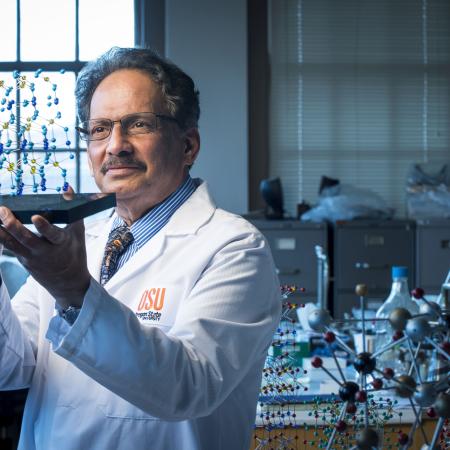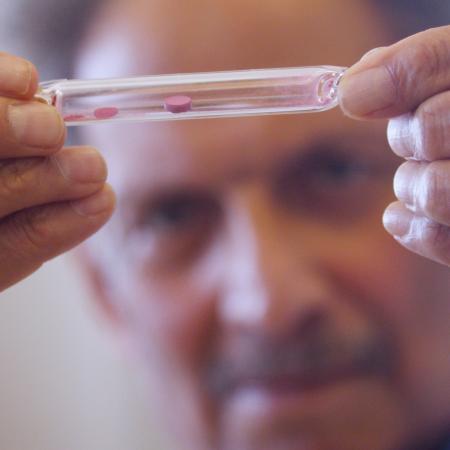Normal OSU sequences
The general chemistry requirement for chemistry minors or other majors is usually met by taking one of the following two sequences at OSU: CH 121/122/123 or CH 231/232/233 for the lectures and CH 261/262/263 for the labs.
Other OSU general chemistry courses
Students taking CH 201 and CH 202 at OSU who wish to pursue a chemistry minor must take the lab CH 205 winter term and either CH 123 or CH 233 + CH 263 (formerly CH 223) the third term. This combination of four courses yields only 12 credits, while there is a minimum of 15 more credits including 12 credits of upper division chemistry courses required for the minor. Students have the option of taking the recitation sections (CH 211 and CH 212) which add 2 more chemistry credits. However, these recitation courses are not taught every year.
Students that transfer from an Oregon community college with CH 201 and CH 202 may also take CH 123 or CH 233 + CH 263 at OSU to finish their general chemistry sequence. Normally, more than 12 upper division CH courses must be taken to provide a minimum of 27 total CH credits.
The rules above also apply for students with majors that require one year of general chemistry.
Transfer sequences from Oregon community colleges or public universities
It is also acceptable to transfer these sequences from an Oregon community colleges or public universities in Oregon if the courses articulate to OSU with these OSU numbers (CH 121 - 123 or 231/232/233 and CH 261/262/263, formerly as CH 221/222/223). (For Treasure Valley Community College, CH 121 appears on the transfer record as something like "LDT Introductory Chemistry," which is also acceptable. Here LDT means lower division transfer.) The maximum credits of general chemistry allowed for the chemistry minor is 15 (i.e., the number of credits for general chemistry sequences at OSU). If an acceptable general chemistry sequence is transferred from another school yielding less than 15 cr, more than 12 upper division chemistry courses are needed to reach 27 total chemistry credits for the minor.
Some 100-level chemistry sequences at community colleges, including CH 104-106, and sometimes CH 121-123, cannot be used to fulfill the chemistry minor requirement for one year of general chemistry because the topics covered are quite different than at OSU and based on a textbook that covers general chemistry, organic chemistry, and biochemistry (GOB). Specific information is found here.
Credit for the chemistry minor is not allowed for two chemistry courses of different level or from two different schools that cover the same basic topics. For example, a student cannot use the credits for CH 121 from another school and also the credits from CH 221 at OSU. In general, the last course taken is the course of record for the chemistry minor.
The rules above also apply for students with majors that require one year of general chemistry.
Transfer sequences from private or out-of-state schools
General chemistry sequences transferred from institutions other than Oregon community colleges or public universities are acceptable if the courses are articulated to OSU as CH 121-123 or 231/232/233 and CH 261/262/263 (formerly CH 221/222/223). Otherwise, a given transferred sequence which articulates as something like "LD college chemistry" will be evaluated on a case by case basis to determine if it is equivalent to one of the acceptable OSU general chemistry sequences. For cases where the general chemistry is transferred from another institution with less than 15 credits, more than 12 upper division CH courses must be taken to provide a minimum of 27 total CH credits.
Introductory chemistry sequences based on a textbook or material that covers general chemistry, organic chemistry and biochemistry (GOB) are not acceptable for the general chemistry requirement of the chemistry minor. The maximum allowed credits of general chemistry allowed for the chemistry minor is 15 (i.e., the number of credits for general chemistry sequences at OSU). A single term or semester introductory or preparation course that is not part of a continuing sequence is not acceptable as a substitute for OSU general chemistry courses.
Credit for the chemistry minor is not allowed for two chemistry courses of different level or from two different schools that cover the same basic topics. For example a student cannot use the credits for the first quarter of general chemistry course from another school and CH 221 (the first quarter course at OSU). In general, the last course taken is the course of record for the chemistry minor.
The rules above also apply for students with majors that require one year of general chemistry.
Transfer sequences from semester-based systems
For cases where a student transfers from a school based on a semester system, one semester of an acceptable general chemistry sequence (see above) counts for only the first quarter of the OSU sequence and the student must enroll in the second quarter course of the OSU sequence (CH 122 or CH 232/262 at OSU). The student then must complete the last two quarters to fulfill the requirement of one year of general chemistry for other majors or for the chemistry minor.
The OSU sequence to complete depends upon the students major and the nature of the semester course that is articulated. A semester course covers only half of the material in the second quarter general chemistry course. If a student takes the second semester of a general chemistry course at another institution, they must take the first two quarters of general chemistry at OSU.
Other guidelines for articulation of chemistry courses
- Two courses from another school cannot be articulated to OSU as only as a single course.
- A lab course can only be articulated to OSU as a lab course.
- A lecture course can only be articulated to OSU as a lecture course.
- A combined lecture/lab course can be articulated to OSU as a separate lecture and lab courses in chemistry if the material is equivalent.
- To be equivalent to an OSU course, the number of lecture hours or lab hours of a transferred course must be approximately equal or greater than the number of lecture or lab hours of the OSU course.
Combinations of courses from different sequences
The record of students who take combinations of general chemistry courses in different sequences, such as CH 231/261 and CH 122, will be evaluated on a case by case basis. Combinations that are acceptable include:
- CH 231/261, CH 232/262, CH 123
- CH 231/261, CH 122, CH 123
- CH 231/261, CH 122, CH 233/263
- CH 231/261, CH 202, CH 205, CH 123
- CH 121, CH 232/262, CH 233/263
- CH 121, CH 122, CH 233/263
- CH 201, CH 122, CH 123
- CH 201, CH 232/262, CH 233/263
- CH 201, CH 122, CH 233/263
- CH 201, CH 232/262, CH 123
- CH 201, CH 202, CH 205, CH 233/263
- CH 121, CH 202, CH 205, CH 233/263
Allowed substitutions in courses sequences above include:
- For CH 221 - CH 224H or the combination of CH 231 & 261
- For CH 222 - CH 225H or the combination of CH 232 & 262
- For CH 223 - CH 226H or the combination of CH 233 & 263


